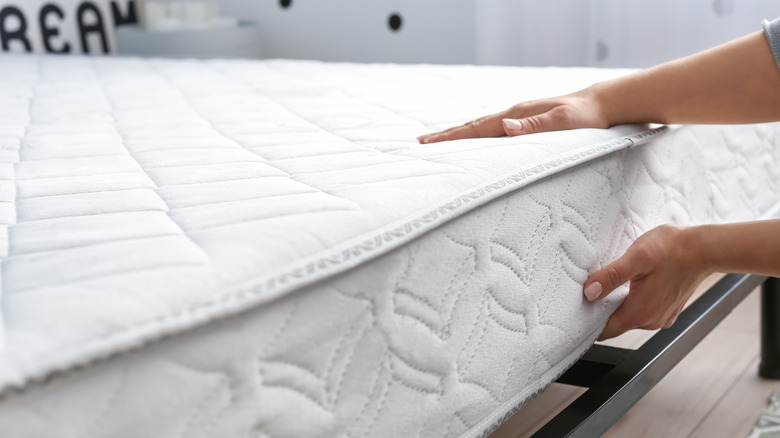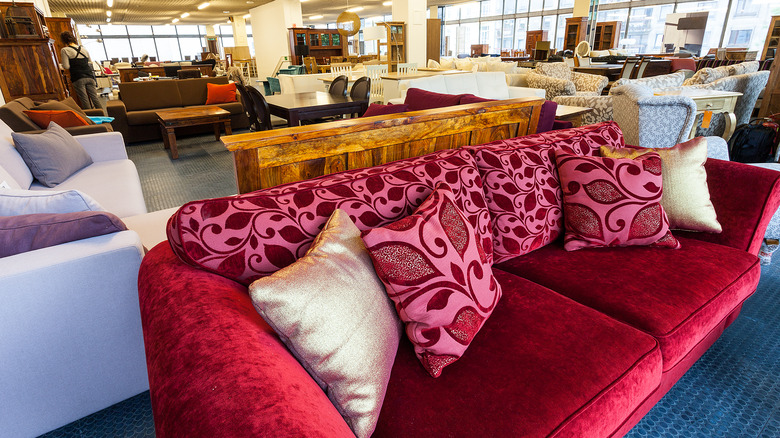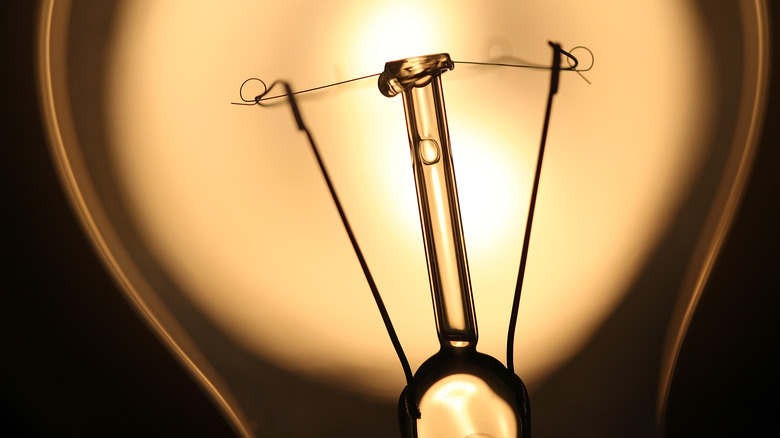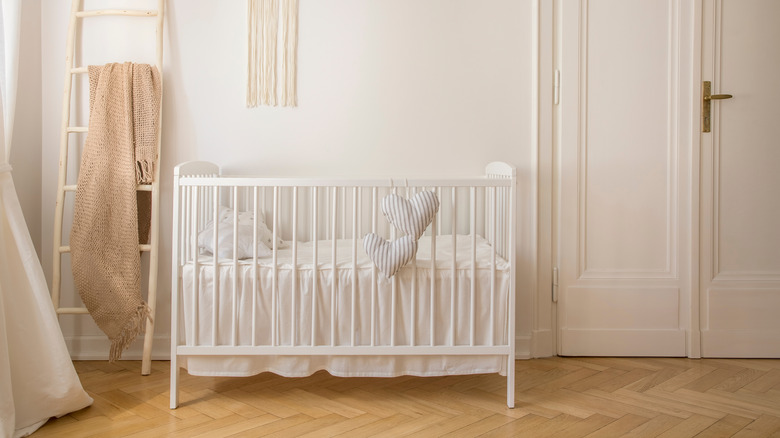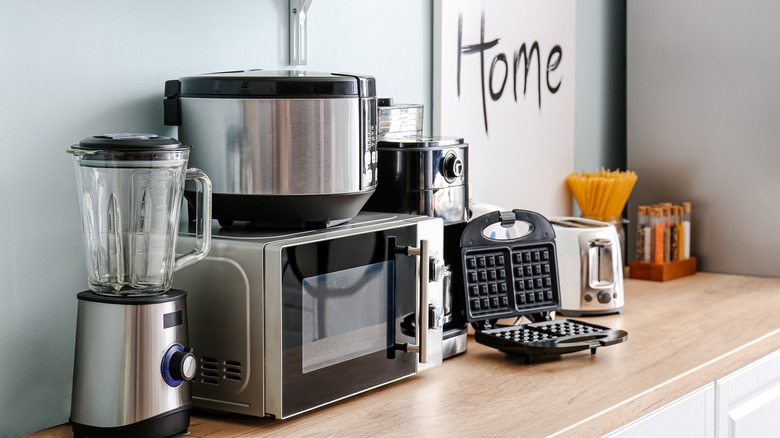5 Home Items You Should Think Twice Before Buying At A Thrift Store
If you're like many people and enjoyed shopping at thrift stores before Macklemore said it was cool, then your home likely displays some of your best frugal finds. Whether you've tracked down some worthwhile décor to incorporate perfectly into your aesthetic or found something functional and practical at a major discount, you're probably a fan of thrifting home goods, too.
While this practice used to be considered kitschy, it's becoming more popular and mainstream as people realize how important it is to be good stewards of the environment and mindful of mass consumption. Not to mention, you can score some really worthwhile stuff for a fraction of the original price.
According to the National Association of Resale Professionals, as many as 16% to 18% of Americans shop at discount stores every year to save money and lessen their environmental footprint. However, as beneficial as it might be for both the environment and your wallet, there are some items you should avoid buying at these shops and instead purchase new elsewhere.
Mattresses
Because buying a quality mattress can be rather pricey, shopping at a secondhand store might seem like a tempting option, especially to prevent putting a dent in your wallet. And while you can definitely save money with something pre-owned, the risks might not make the lower price tag worth it. According to Nolah Sleep, a used mattress can trap and hide sweat, bacteria, mold, dead skin cells, and other allergens. Even something that looks clean could still be dirty and unsanitary beneath the surface.
Mattresses can also house bed bugs, which are small enough that they can't always be seen with the naked eye. Because these tiny parasites are nocturnal, they can hibernate tucked under the corners of a mattress for months in a thrift store without feeding (via Sammy D Vintage). Eventually, when someone purchases and takes it home, these critters will awake from hibernation after sensing body heat.
This increases the likelihood that they will remain undetected until it's too late before ultimately infesting your bed. For this reason, Zoma Sleep says it can be nearly impossible — and sometimes illegal — to sell used mattresses in certain states. Not only do bed bugs bite and irritate your skin, they — along with dust mites — can trigger coughing, difficulty breathing, and other respiratory issues if you experience allergies or asthma.
Upholstered furniture
As easy as it is to toss your hand-me-down jeans into the washing machine, furniture is a little harder to sanitize. Upholstered furniture can conceal all the dirt, germs, and sweat that a mattress can, and is another place for bed bugs and dust mites to hide. Not only can upholstered furniture conceal pests, allergens, and other germs, but if the piece you found was made between 1984 and 2010, there's a good chance it contains a harmful toxin that was previously intended to act as a fire retardant (via Country Living).
In fact, 85% of upholstered furniture manufactured during this period was treated with a chemical that's now known to be toxic, per Country Living. If the cool, 80s-inspired chair you found at the thrift store has a strong chemical smell, there's a good chance it contains this toxin that's now being banned in some states. As a best practice, experts suggest avoiding old couches and chairs altogether to avoid hidden germs and chemical contaminants.
Halogen lamps
As hard as it might be to leave the cool, vintage halogen lamp behind, knowing it's a major fire hazard might make things easier. According to Sammy D Vintage, while modern halogen lamps are manufactured with a protective glass or wireframe over the bulb, older models don't have this feature. These vintage lamps might look cooler or feel more unique than the versions being made today, but they're also a lot more dangerous.
Additionally, halogen lamps burn brighter than other lamps due to their use of iodine and bromine. Because of this, they also burn much hotter. In fact, their design was only changed when it became known that the extreme heat from the lightbulb was enough to easily catch other objects on fire, such as curtains and other flammable textiles (per Sammy D Vintage).
Because vintage halogen lamps are generally regarded as more intricate and decorative than more contemporary versions, they remain rather popular with collectors. If you're looking for a vintage lamp, instead of buying something that's unsafe, consider a newer model with vintage design nods and inspiration. This will give your space the character you want while keeping you and the rest of your house safe.
Children's cribs
When it comes to your child's health and safety, it's paramount to invest in stuff that will keep them protected. That's why it's not a good idea to buy second-hand cribs at thrift stores. All baby beds sold in the U.S. have to meet a certain set of safety standards in order to be sold. However, some of the rules and regulations were optional until June 2011 when they became mandatory (via Very Well Family).
As such, be extra careful if you decide to purchase a bed for your child that was manufactured before this date. The slats in the siding of the crib should be no wider than 2 3/8 inches, which is about as wide as a can of soda. Be aware that decorative cut-outs in the headboard and footboard can also pose a threat and might not be up to safety standards if the bed is older.
Additionally, cribs bought from a thrift store might have missing parts you aren't aware of, making them dangerous to use as-is. According to the Consumer Product Safety Commission, missing parts increase the likelihood that you'll unknowingly assemble items wrong, and missing or broken pieces can create gaps that aren't safe for your baby. Furthermore, baby beds sold secondhand can often escape recall notices undetected, so you could unknowingly be buying one that has been recalled from stores for safety issues.
Kitchen appliances
While kitchen appliances are commonly found at thrift stores, when it comes to anything that will be used for cooking, it's best to avoid all previously owned products. Steven Millstein, editor at Credit Repair Expert, says you can't always be certain kitchen appliances at thrift stores even work; after all, you won't be able to check to make sure before purchasing something (via Money Talks News). If you get it home to find that it doesn't work, he adds that there's a good likelihood it will no longer be covered under the manufacturer's warranty. That means you're out whatever you spent on the purchase.
Even if a particular appliance works, it may not work well, as blades in blenders and food processors can dull over time. Not to mention, these appliances come with a lot of parts or are particularly difficult to clean, making it certain that food or mold is still lingering where you can't see it. Yuck. According to Duct Tape and Denim, a kitchen appliance is extra likely to have salmonella and other germs hanging around if it was ever used to cook meat, as grease and juice from cooking can be difficult to completely clean.

